Abstract
Because staff attitudes and affects are impediments or strengths in appropriately assessing and managing traumatized or violent patients, the authors discuss the need to explore staff's experience with trauma and violence. A survey of social service field and administrative office-based staff revealed that numerous staff had experienced traumatic events. Compared with staff based in a downtown administrative office, significantly more field-based staff were dissatisfied with their job's neighborhood and perceived their job's neighborhood as a dangerous place to work. Further, significantly more field staff perceived that their job's neighbors would be "unlikely" to intervene in observed antisocial behaviors. In our sample of primarily female, African-American, social service staff, the ratio of victimization was higher than rates in other studies. Screening social service staff for experiences of trauma and victimization and asking about their perceptions about their job's neighborhood will help leadership shape efforts to address these dynamics. By addressing staff's perceptions of their job's neighborhood, leadership can influence staff's willingness to participate in proactive community organizing and prevention activities designed to reduce violence and increase safety. Several recommendations to reduce violence in the workplace are presented.
Full text
PDF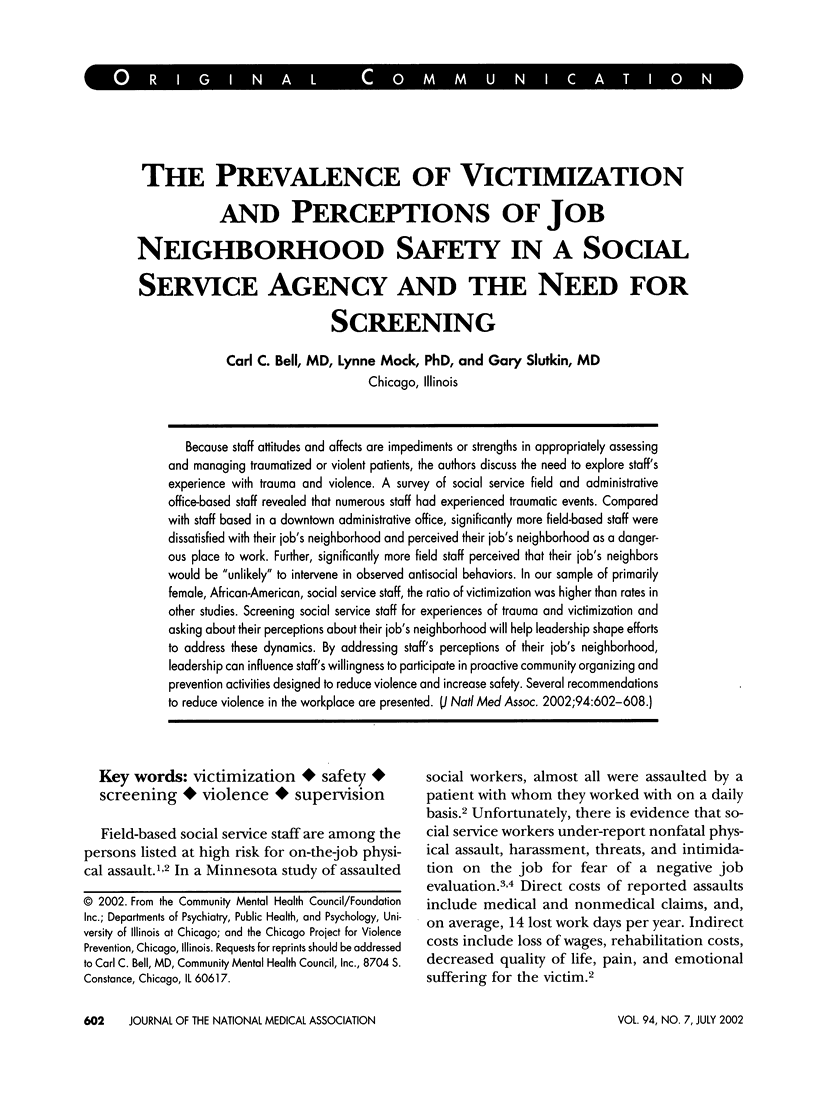

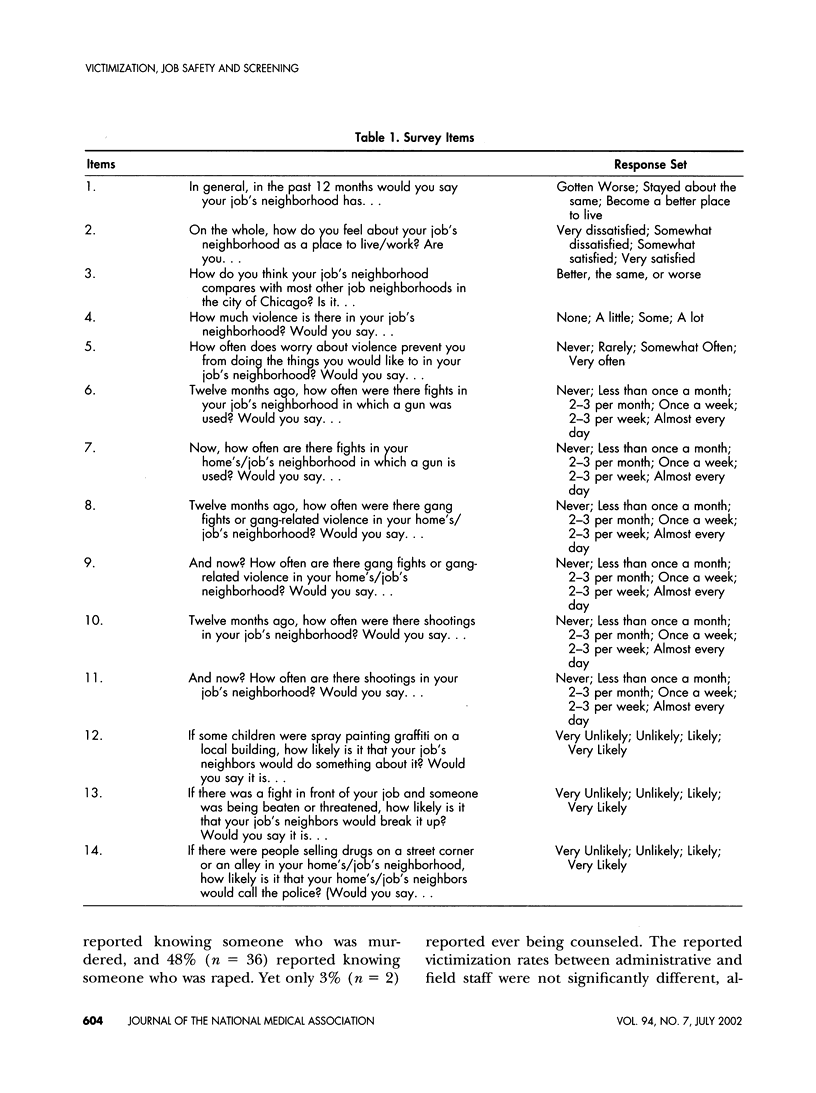
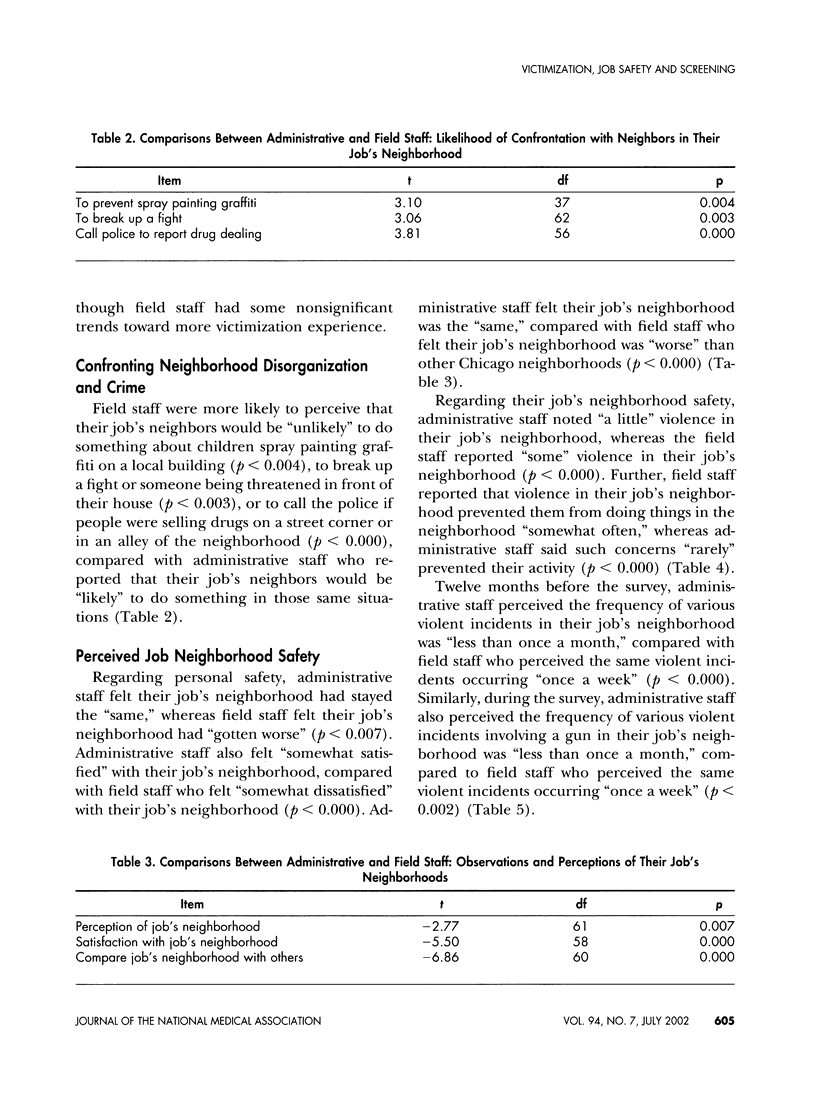
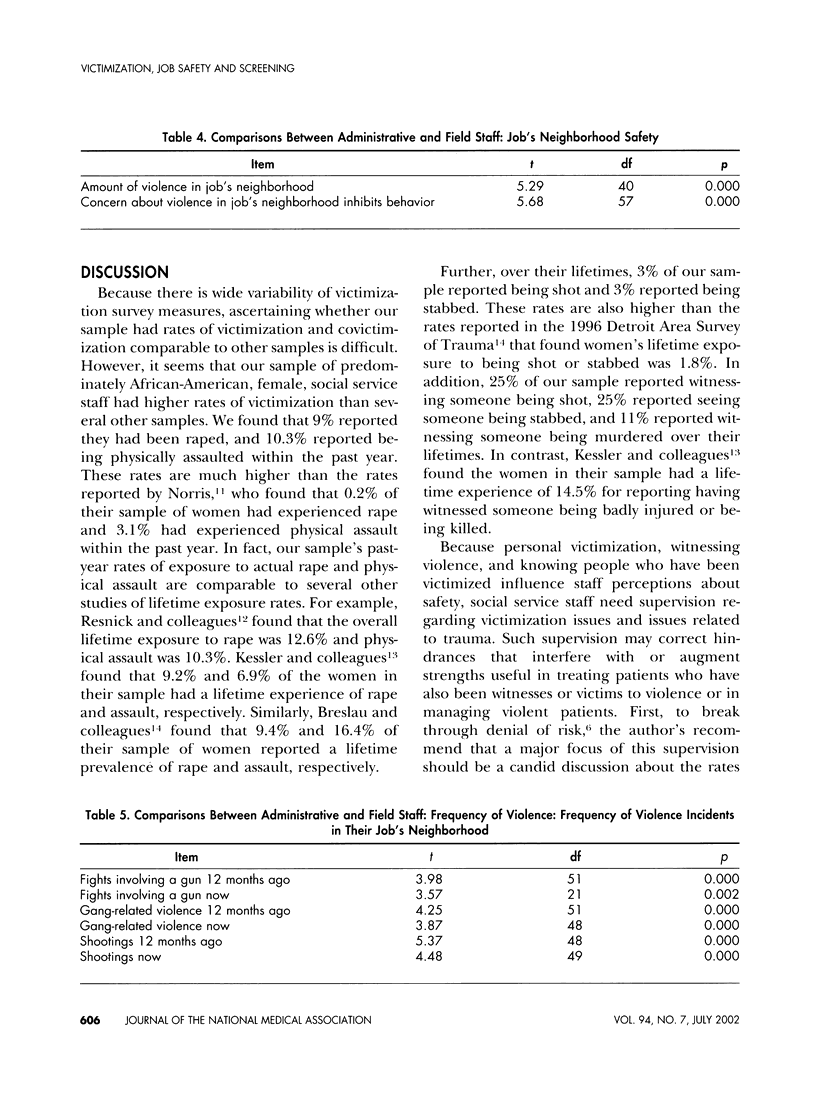
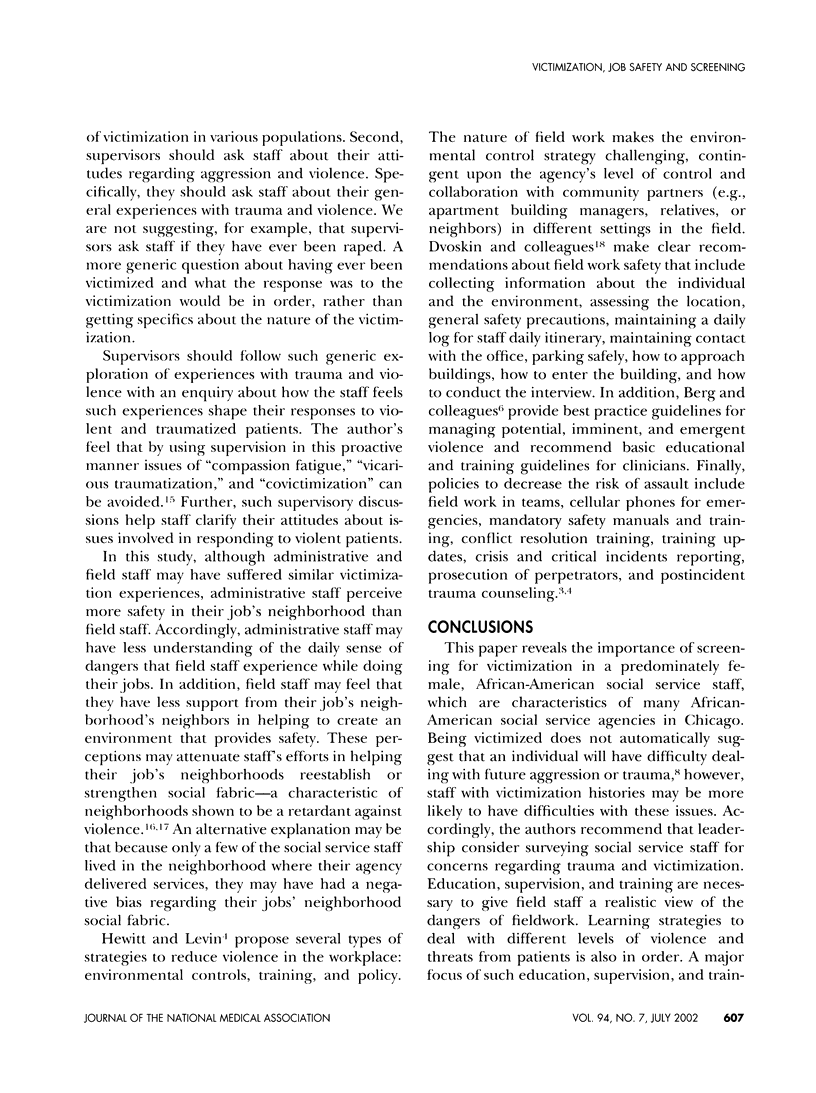
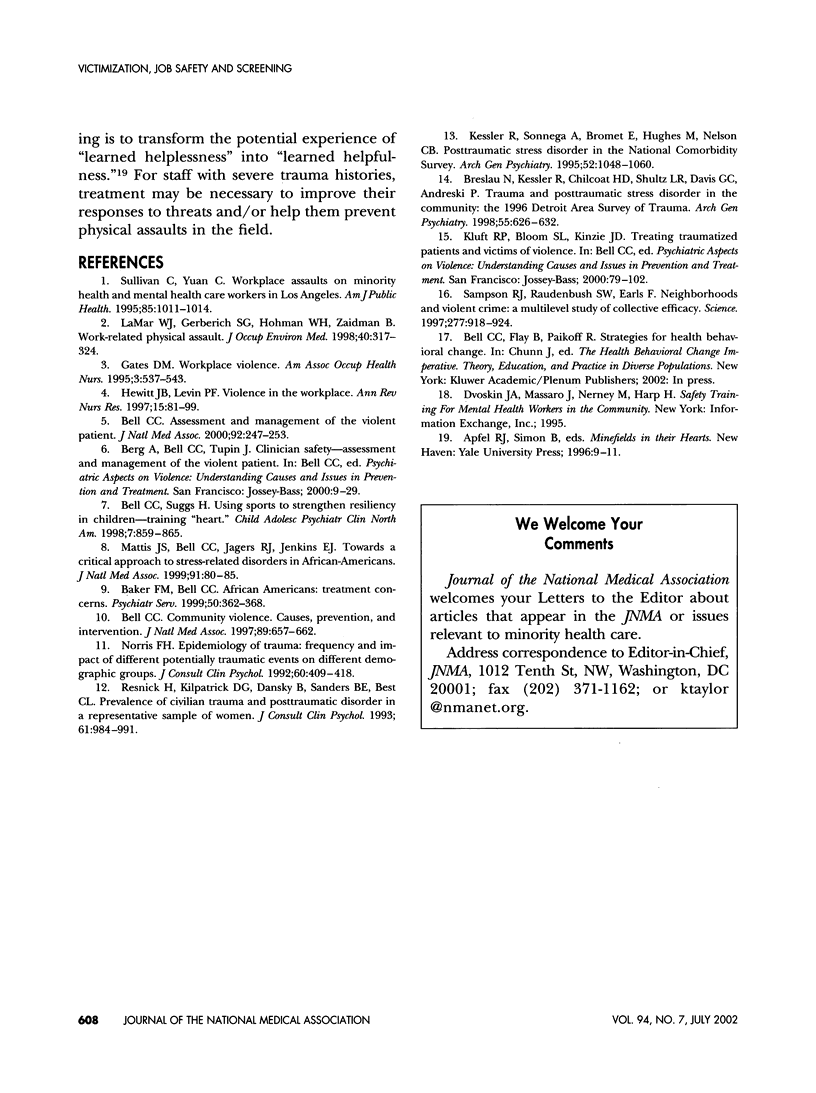
Selected References
These references are in PubMed. This may not be the complete list of references from this article.
- Baker F. M., Bell C. C. Issues in the psychiatric treatment of African Americans. Psychiatr Serv. 1999 Mar;50(3):362–368. doi: 10.1176/ps.50.3.362. [DOI] [PubMed] [Google Scholar]
- Bell C. C. Assessment and management of the violent patient. J Natl Med Assoc. 2000 May;92(5):247–253. [PMC free article] [PubMed] [Google Scholar]
- Bell C. C. Community violence: causes, prevention, and intervention. J Natl Med Assoc. 1997 Oct;89(10):657–662. [PMC free article] [PubMed] [Google Scholar]
- Bell C. C., Suggs H. Using sports to strengthen resiliency in children. Training heart. Child Adolesc Psychiatr Clin N Am. 1998 Oct;7(4):859–865. [PubMed] [Google Scholar]
- Berg A. Z., Bell C. C., Tupin J. Clinician safety: assessing and managing the violent patient. New Dir Ment Health Serv. 2000 Summer;(86):9–29. doi: 10.1002/yd.23320008604. [DOI] [PubMed] [Google Scholar]
- Breslau N., Kessler R. C., Chilcoat H. D., Schultz L. R., Davis G. C., Andreski P. Trauma and posttraumatic stress disorder in the community: the 1996 Detroit Area Survey of Trauma. Arch Gen Psychiatry. 1998 Jul;55(7):626–632. doi: 10.1001/archpsyc.55.7.626. [DOI] [PubMed] [Google Scholar]
- Hewitt J. B., Levin P. F. Violence in the workplace. Annu Rev Nurs Res. 1997;15:81–99. [PubMed] [Google Scholar]
- Kessler R. C., Sonnega A., Bromet E., Hughes M., Nelson C. B. Posttraumatic stress disorder in the National Comorbidity Survey. Arch Gen Psychiatry. 1995 Dec;52(12):1048–1060. doi: 10.1001/archpsyc.1995.03950240066012. [DOI] [PubMed] [Google Scholar]
- Kluft R. P., Bloom S. L., Kinzie J. D. Treating traumatized patients and victims of violence. New Dir Ment Health Serv. 2000 Summer;(86):79–102. doi: 10.1002/yd.23320008610. [DOI] [PubMed] [Google Scholar]
- LaMar W. J., Gerberich S. G., Lohman W. H., Zaidman B. Work-related physical assault. J Occup Environ Med. 1998 Apr;40(4):317–324. doi: 10.1097/00043764-199804000-00005. [DOI] [PubMed] [Google Scholar]
- Mattis J. S., Bell C. C., Jagers R. J., Jenkins E. A critical approach to stress-related disorders in African Americans. J Natl Med Assoc. 1999 Feb;91(2):80–85. [PMC free article] [PubMed] [Google Scholar]
- Norris F. H. Epidemiology of trauma: frequency and impact of different potentially traumatic events on different demographic groups. J Consult Clin Psychol. 1992 Jun;60(3):409–418. doi: 10.1037//0022-006x.60.3.409. [DOI] [PubMed] [Google Scholar]
- Resnick H. S., Kilpatrick D. G., Dansky B. S., Saunders B. E., Best C. L. Prevalence of civilian trauma and posttraumatic stress disorder in a representative national sample of women. J Consult Clin Psychol. 1993 Dec;61(6):984–991. doi: 10.1037//0022-006x.61.6.984. [DOI] [PubMed] [Google Scholar]
- Sampson R. J., Raudenbush S. W., Earls F. Neighborhoods and violent crime: a multilevel study of collective efficacy. Science. 1997 Aug 15;277(5328):918–924. doi: 10.1126/science.277.5328.918. [DOI] [PubMed] [Google Scholar]
- Sullivan C., Yuan C. Workplace assaults on minority health and mental health care workers in Los Angeles. Am J Public Health. 1995 Jul;85(7):1011–1014. doi: 10.2105/ajph.85.7.1011. [DOI] [PMC free article] [PubMed] [Google Scholar]


